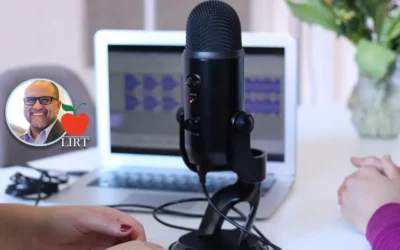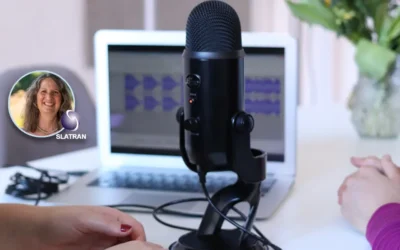Part Three: Building Your KM Nest – 5 More Strategies for Special Librarians

Stephen Abram
In Part One of this series, we reframed knowledge management strategies in the context of strategies for improving the health of the knowledge ecology. We’re using the metaphor of building a nest (sometimes referred to as an intranet) where our eggs can hatch and ideas grow, and decisions improve in quality. In Part Two we explored five strategies, tactics and frameworks for accomplishing this. Now, in the final post of this three-part series, we offer an additional five strategies.
Strategy #6:
Understand the Dynamics of Your Ecology
Ecology is the science of understanding whole environments. Focusing on our ecology is to focus on human-centered information management. Therefore, the relationships of the parts to the whole are of paramount importance. In order to effectively help with information adaptation, you must immerse yourself in people’s information ocean; i.e., understand your ‘‘user.’’ The shift we’re experiencing right now is a refreshing move from a technology-centered focus, with emphasis on generation, collection, and distribution, to one where the emphasis is on effective use and usefulness. The ecology is ‘‘sick’’ if there is not a balance between technology and people. Strategically look at your ecology and your role in it:
- View and map the relationships.
- How is learning happening, and with what?
- When does innovation and creativity occur?
- How do they turn ideas into action?
Strategy #7:
Understand the Rule of 15% and Apply It in Your Development and Evaluations
There is a significant body of research about human perception, the hypothesis of which is that humans can only see change when it is visible and when it exceeds 12-15%. This has been tested on such diverse subjects as candlelight, music volume, added-value features, price, and job evaluation points. It used to be said that you could be successful if you did 100 things 1% better. The 15% theory would postulate that, in such an environment, no one would notice. This theory reinforces the role of strategy in setting priorities on those things and activities that really matter. Priorities for libraries should be proving to the user (actually prove!) the visible value in your products, services, and organization, and assessing whether parts of your service are at risk of commoditization—i.e., services that can no longer be improved with added value features.
Strategy #8:
Be Realistic About the Adoption Cycle
The future of information professionals will be integrally tied to introducing new services, interfaces, content, products, and training to the enterprise. Each ‘‘new’’ thing will need to be adopted by the users and markets. Understand three classic laws of adoption:
- There are five immutable adoption stages that EVERY individual must progress through before completing adoption: awareness, interest, evaluation, trial, adoption. Failure to follow these steps, in order, will result in the failure of users to adopt a new idea, product, or service.
- There are five key attributes that favour more rapid adoption. Feel free to ensure your initiative uses these in a Machiavellian manner. These attributes are relative advantage, compatibility, reduced complexity, trial-ability, and observability.
- There is a classic bell curve to adoption and the individual’s pattern of risk-taking behaviors:
- Innovators 2.5%
- Early Adopters 13.0%
- Early Majority 17.0%
- Middle Majority 34.0%
- Laggards 17.5%
- Non-Adopters 16.0%
Don’t be fooled about the value of your initiative by the reactions of late adopters during the launch period. Also don’t get too encouraged by innovators’ excitement, until you get some feedback from the second stage early adopters. New initiatives are exciting. Don’t let your strategies fail by evaluating them too early.
Strategy #9:
Truly Know That People Don’t Want or Need Information
This may seem like librarian heresy, but people don’t want information—especially in the form of articles, books, printouts, fiche, USB drives, Websites or whatever. They want usable answers, confidence and success. They want to find, NOT search. With this insight you can be prepared to market to your users’ real needs. We’ve spent decades marketing our collections and services and not vastly increasing our success. By targeting people’s real needs and desires we become immeasurably more tied to their ultimate success.
As an example, research done by the great knowledge management guru, Tom Davenport, identifies the information preferences of information executives: received from people; in context; current, correct and concise; operational; about people (who got what), and external rather than internal.
Note that this doesn’t mention format or content but talks about attributes of the information process and experience. Enhance the information experience and you will be more successful. Enhance only the information and you won’t get there.
Strategy #10:
Become a Transformational Librarian
Knowledge management targets both kinds of knowledge—tacit and explicit. Tacit knowledge is know-how. It is intangible, harder to adopt/learn, and generally more valuable. Explicit knowledge is about ‘‘knowing that’’ and ‘‘knowing what.’’ It is tangible, able to be represented, easier to distribute, manage, and control. Many other languages separate these two concepts into two words; for example, the French ‘‘savoir’’ and ‘‘connâitre’’ [Connâitre means ‘to know, to be acquainted with, to make the acquaintance of.’ Savoir means ‘to know how’]. A transformational librarian keeps these two aspects of knowledge in balance.
Over the years, librarianship, on the whole, swung too far to managing explicit information, and lost touch with our more valuable professional skills of leading (or being a catalyst in) the creative process of developing human beings with new tacit knowledge. In the knowledge ecology, there is an expanded role for librarians as knowledge leaders:
- Information pruning
- Adding context
- Enhancing style
- Choosing the right medium
- Knowledge management activities; e.g., taxonomist
- Information audits
- Information mapping
- Best practice databases
- Information literacy training
- Skills and competencies databanks
- Information integrity and organization
- Licensing negotiation
- Design and customization
- Navigators (personal and virtual)
- Information selection and integration skills
- Information organization (micro and macro) skills
- Interface selection and design, combined with training skills
- Searching, finding, and usage skills (analysis, packaging, reporting)
- High level information literacy skills
- From Gatekeepers to Gateways
- Guide, trainer, teacher, coach
- Team member, partner
- Seller, marketer
- Information Ocean organizer, designer
- Linker, qualifier, chooser, and buyer
Transformational librarians focus on where the transformations occur. Transformations occur for librarians and their users primarily between information and knowledge, and between knowledge and behavior. It’s called learning in one case and success in the other.
Transformational librarians focus on the learning organization. It’s a potentially huge transformational leap to move to this perspective. The Special Libraries Association calls this ‘‘Turning Information into Knowledge and Putting Knowledge to Work.’’ Also, by focusing on ultimate behaviors, we make the challenge to librarians’ turf by other information and data professionals less of a threat.
Conclusion and Next Steps
Some final tactics are needed to start on your path to the future. My top four recommended tactics are:
- Suck up to IT—you need their competencies. It’s probably your second most important strategic relationship.
- Have lunch with your enterprise and market leaders and the entire breadth of potential users. Your success will be in understanding your users’ real needs and goals.
- Leave the library occasionally. It will only fall apart without you if you stay stuck there.
- Walk and interpret—observe what your users are doing, NOT what they say they’re doing. With messianic fervor, share your insights with your team. It is absolutely true that librarians and information professionals have nearly all the competencies to thrive in the new knowledge ecology, but ‘‘Insanity is doing things the way you’ve always done them and expecting different results’’ (Rita Mae Brown).
An ecology requires a healthy climate, and we can be catalysts in the ultimate health and success of the climate of the knowledge society. Remember that it was only from the perspective of the dinosaur that climatic change was a bad thing—we mammals thought it was a pretty neat change!
Back to the Bird’s Nest
Now back to our robin we met in Part One and her nest. The robin is us. The nest is our library services in the workplace environment. The robin built a beautiful nest using the latest, most available and most appealing materials. But she forgot what the nest was for in the first place—to incubate the next generation to become successful participants in the ecology. Digital experiences in libraries are meaningless without money for content and staff animation. The content is useless if it’s not both physically and intellectually accessible. Staff programs are pointless, if they’re not aimed at increasing knowledge competencies and learning. Market the hell out of that idea—not the shiny technology. The role of the special information professional is to engage minds and hearts through building both digital resources and personal relationships that encourage a healthy knowledge ecology.
-Stephen

Stephen Abram
Never miss another post. Subscribe today!
Similar Posts
Interview with Susannah Barnes about the SLA Data Community
Susannah Barnes is the Co-Lead of the Data Community for the Special Libraries Association. If you work with data in any capacity, this interview will be of interest to you.
Interview with Victor Baeza about ALA’s Library Instruction Round Table
Interview with Victor Baeza, President of LIRT, about how it benefits from and supports special librarians whose roles involve teaching or training.
Interview with Eugene Giudice, SLA Treasurer
Interview with SLA’s Treasurer about the future of the special library profession and how the Special Libraries Association can benefit librarians
Interview with Cara Marcus on Transportation Librarianship and SLA
Interview with Cara Marcus, the president of the Special Libraries Association (SLA) transportation community about transportation libraries and SLA
Hosting service
Enjoy all of the benefits of your Lucidea solution with secure, reliable, stress free hosting
Programs & incentives
No matter your size or budget, we’ve got you covered, today and tomorrow



